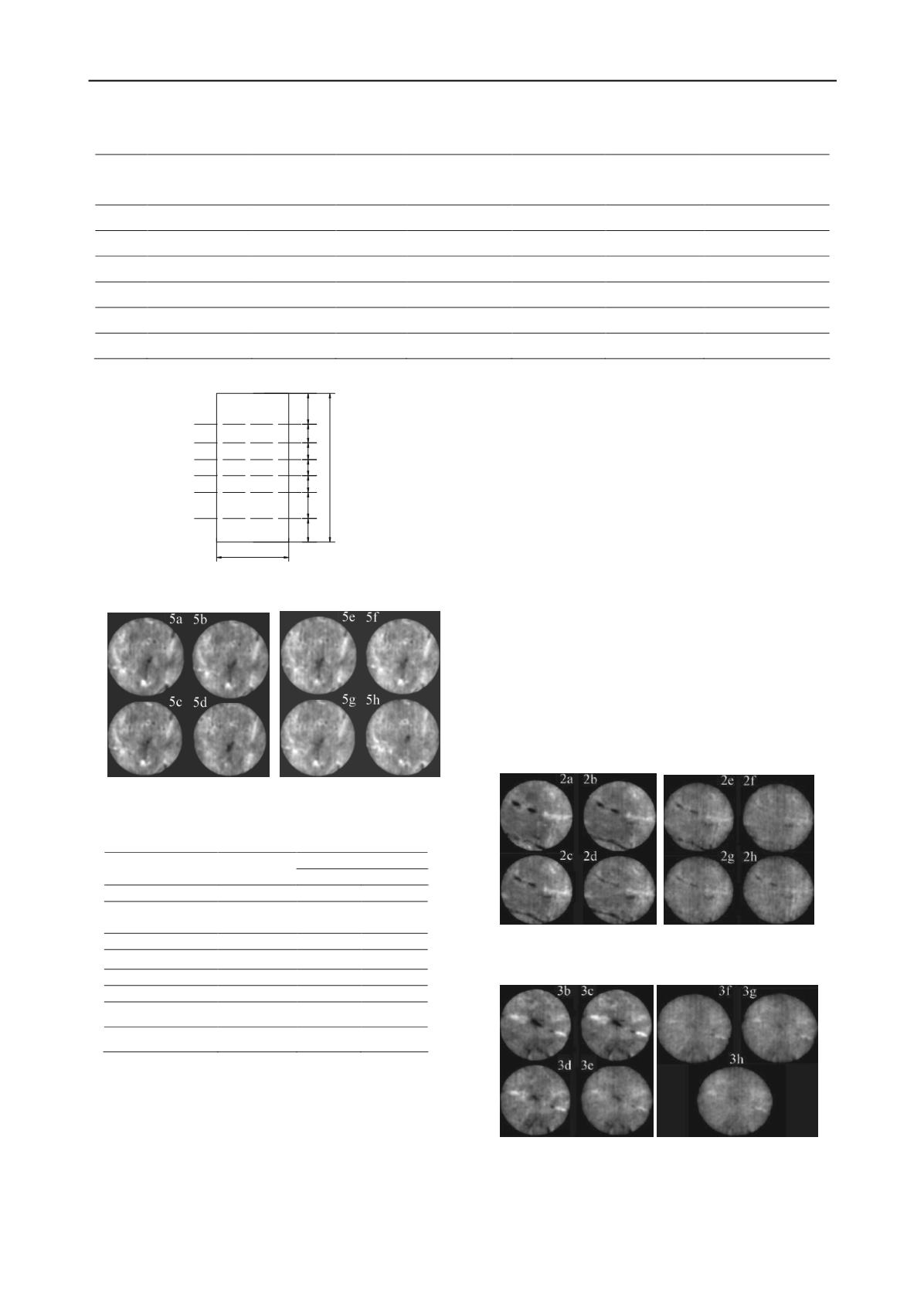
213
Technical Committee 101 - Session I /
Comité technique 101 - Session I
Proceedings of the 18
th
International Conference on Soil Mechanics and Geotechnical Engineering, Paris 2013
Tab.2 Initial physical parameters and stress states of samples before soaking
6
5
4
3
2
1
80
10 9 8.67
9
14
12.67
16.67
39.1
Figure 5. Scanning position (length unit: mm)
Figure 6 Scanning images of 5
th
section of sample 3
#
of Q
3
loess
during loading
Tab.3 CT data and stress state of sample 3# during loading
5
th
Section
Stress state
Scan
sequence
H
SD
Initial state
a
821.1
49.4
End of
consolidation
b
854.6
44.7
q = 25 kPa
c
856.5
44.7
q = 50 kPa
d
852.7
41.4
q = 75 kPa
e
854.1
42.6
q = 100 kPa
f
854.0
41.7
q = 150 kPa
g
887.0
45.9
q = 200 kPa
h
927.2
43.4
4 STRUCTURE EVOLUTION OF LOESS Q
3
Collapsibility is the most important feature of loess.
However, collapsibility depends on the meso-structure of loess.
In order to discover the characteristics of the meso-structure
evolution of loess, 10 groups of CT-triaxial tests including 49
samples of Q
3
loess were conducted. A total of 847 CT images
and a number of CT data were obtained (Zhu, 2007; Fang,
2008; Li, 2010).
4.1 The structure evolution of Q
3
loess during loading and
collapsing
Six tests of intact Q
3
loess were conducted. The size of samples
was 39.1mm in diameter and 80mm in height. The initial
conditions and test parameters of the samples are shown in table
2. Each sample was scanned 6 sections (Figure 5), and each
section was scanned from 6 to 8 times. The scanning pictures
were marked as a, b, c, d, e, f, g and h corresponding to a
section in successive scanning (Zhu, 2008a). A total of 273 CT
images were obtained.
Figure 6 shows the Scanning images of 5
th
section of sample
3
#
of Q
3
loess during loading. The scanning pictures were
marked as a, b, c, d, e, f, g and h corresponding to the initial
state, the end of consolidation, and deviator stress ( q ) equal to
25
,
50
,
75
,
100
,
150 and 200 kPa of the 5
th
section (
Table
3)
. H and SD in table 3 are the mean value and the standard
deviation of CT data of the 5
th
section.
It is clear from Figure 6 and
Table 3
that consolidation has
significant effect on the meso-structure of sample, and there is
no evident change in the meso-structure of sample 3
#
before
deviator stress less than 150 kPa. In addition, the defect region
(black part in Figure 6) not vanishes completely at the end of
loading.
Figure 7 Scanning images during triaxial collapse of
2nd section of sample 4# of intact Q3 loess
Fig.8 Scanning images during triaxial collapse of
3rd section of sample 4# of intact Q3 loess
No.of
sample
Initial dry density
g / cm
3
Initial water
content /% Void ratio
Net cell pressure
3
- )
a
u
(
/ kPa
Matric suction
s / kPa
Deviator stress
q / kPa
Water pressure
during soak / kPa
1
1.31
11.0
1.08
100
150
0
4
2
1.31
11.0
1.08
200
150
0
12
3
1.32
11.0
1.04
100
150
200
14
4
1.32
11.0
1.05
100
250
0
12
5
1.31
11.0
1.06
100
150
100
14
6
1.30
11.0
1.08
100
150
250
14


